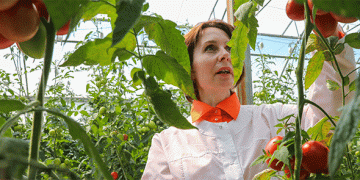In November 2024, Spanish cucumbers, particularly the Almería variety, experienced a significant price hike along the supply chain, rising by an average of 226% from the farmer’s asking price to the consumer’s purchase price, as reported by Hortoinfo.es. This discrepancy highlights a troubling trend for farmers, as the prices they received dropped below production costs during much of the month.
According to the Price Index from Origin to Destination (IPOD), compiled monthly by the Coordinator of Farmer and Livestock Organizations (COAG), the average price farmers received for cucumbers was €0.57/kg. Meanwhile, the average retail price reached €1.86/kg, more than tripling the origin price. This price surge did not benefit the farmers, whose income was significantly impacted by plunging farmgate prices during the month.
Breaking down the weekly data for the Almería cucumber variety:
- Week 45 (Nov 4–10): Average price €0.84/kg
- Week 46: Declined to €0.59/kg
- Week 47: Further dropped to €0.35/kg
- Week 48 (Nov 25–30): Hit a low of €0.28/kg—almost half the estimated production cost of €0.50/kg.
These figures underline a critical imbalance. Farmers’ earnings fell below sustainable levels, prompting Hortyfruta to prohibit the sale of second-class cucumbers during the latter part of November to prevent further losses. Retailers, however, maintained high prices, raising questions about pricing transparency and fairness within the supply chain.
This situation has broader implications for Spain’s agricultural sector. Farmers facing persistent losses may struggle to maintain production, which could jeopardize supply and increase dependence on imports. Additionally, the disparity between farmgate and retail prices underscores the need for regulatory measures to ensure equitable distribution of profits across the supply chain.
The 226% price increase of cucumbers in Spain during November 2024 reflects a concerning trend of market imbalance. While consumers face inflated prices, farmers endure financial hardship as their returns fail to cover production costs. Addressing these issues requires greater transparency, fairer pricing policies, and support for farmers to sustain domestic agriculture.
































